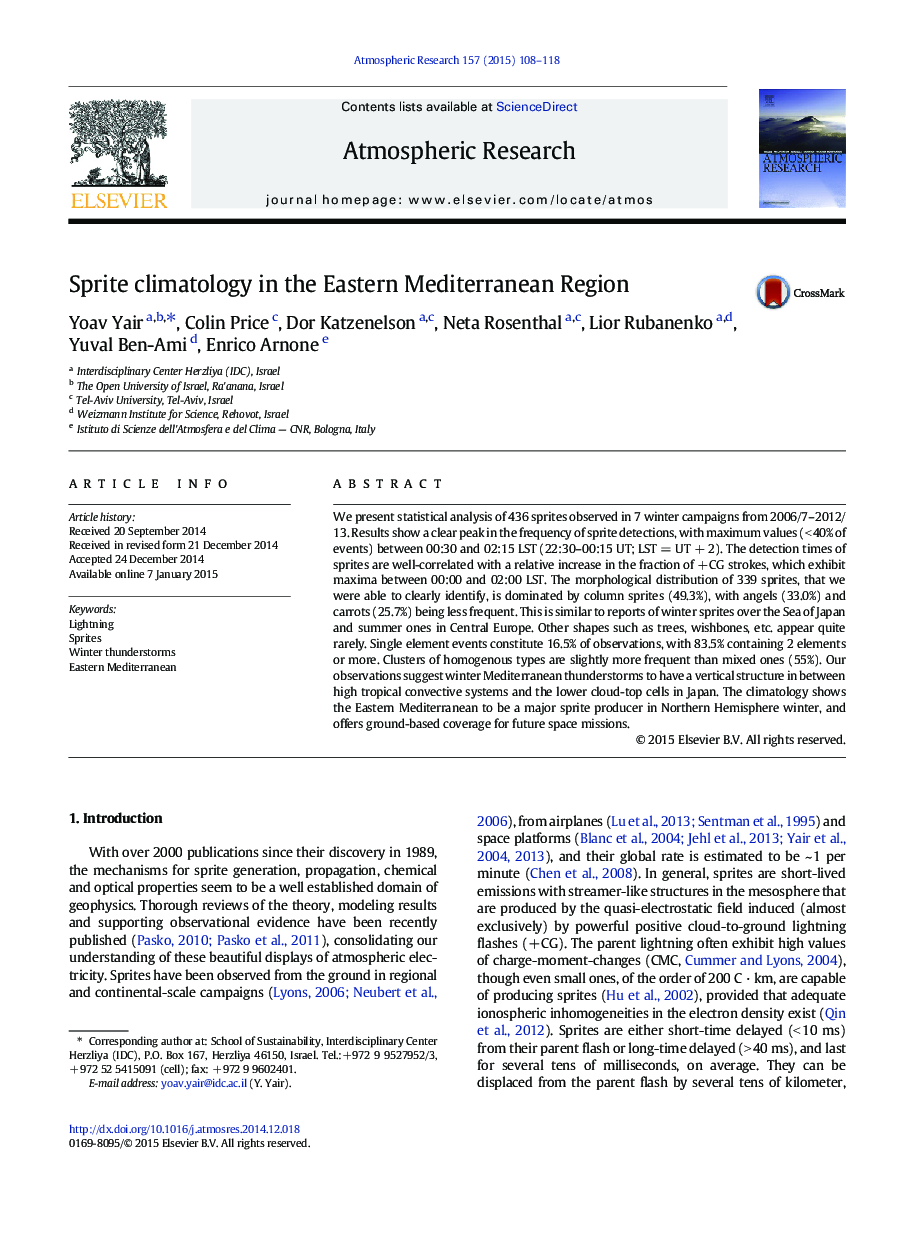| Article ID | Journal | Published Year | Pages | File Type |
|---|---|---|---|---|
| 4449803 | Atmospheric Research | 2015 | 11 Pages |
•Results of 7 years of ground-based sprite observations conducted from Israel — the longest record published to date.•New and comprehensive statistical and morphological analysis of the occurrence rates and types in the Eastern Mediterranean regions which is poorly covered by space missions.•A comparison to Japanese winter thunderstorms highlights the differences between the two regions, and offers a new schematic structure for describing thunderstorms over the Mediterranean Sea.•The infrastructure for sprite observations that exists in Israel offers a vital element in supporting the upcoming ASIM and TARANIS missions, and is also capable of giving ground-truth for other sprite campaigns from space such as GLIMS on the ISS.
We present statistical analysis of 436 sprites observed in 7 winter campaigns from 2006/7–2012/13. Results show a clear peak in the frequency of sprite detections, with maximum values (< 40% of events) between 00:30 and 02:15 LST (22:30–00:15 UT; LST = UT + 2). The detection times of sprites are well-correlated with a relative increase in the fraction of + CG strokes, which exhibit maxima between 00:00 and 02:00 LST. The morphological distribution of 339 sprites, that we were able to clearly identify, is dominated by column sprites (49.3%), with angels (33.0%) and carrots (25.7%) being less frequent. This is similar to reports of winter sprites over the Sea of Japan and summer ones in Central Europe. Other shapes such as trees, wishbones, etc. appear quite rarely. Single element events constitute 16.5% of observations, with 83.5% containing 2 elements or more. Clusters of homogenous types are slightly more frequent than mixed ones (55%). Our observations suggest winter Mediterranean thunderstorms to have a vertical structure in between high tropical convective systems and the lower cloud-top cells in Japan. The climatology shows the Eastern Mediterranean to be a major sprite producer in Northern Hemisphere winter, and offers ground-based coverage for future space missions.
